#the batavian revolt
Text
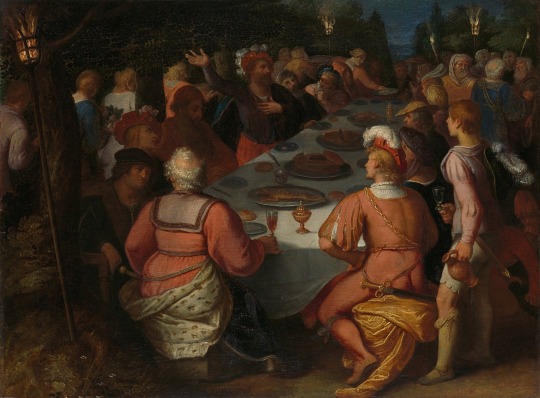
The Conspiracy of Claudius Civilis and the Batavians in the Schakerbos | The Conspiracy of Julius Civilis and the Batavians in a Sacred Grove
by Otto van Veen
#julius civilis#claudius civilis#batavians#revolt#batavi#art#painting#history#europe#european#otto van veen#conspirators#conspiracy#roman empire#province#sacred grove#germania#germanic#tribes#uprising#netherlands#holland
14 notes
·
View notes
Text
Singing & the Dutch Revolution - part one
'The Dutch revolutionary period—or ‘Bataafs-Franse tijd’—was long a neglected period in Dutch historiography but has in the past decades received increasing scholarly attention
(…)
Van Sas has aptly characterised the Dutch revolutionary period as a time of “metamorphosis” (van Sas 2004, 31). His study maps the developments starting in 1750, with particular emphasis on the years 1770-1813, and points out how nineteenth[1]century authors tried to erase this period from historiography to avoid confronting the stark oppositions that dominated that time. Instead, they focussed on the cultivation of patriotic feelings from 1813 onwards (ibid., 18). Both the time leading up to the revolutionary period and its aftermath are important factors in our understanding of the significance of the years around 1800. Many eighteenth-century contemporaries experienced a sense of decline of the ‘once great and well faring’ Dutch Republic. Whereas in the seventeenth century, the Dutch had played a dominating role on the world’s stage, their significance waned over the course of the eighteenth century due to the rise of France and Britain’s economic and political powers. Dutch dissatisfaction about these developments resulted in a critique of the current state of government in the Dutch Republic, which increased in the 1770s and 1780s. After the revolutionary period, the political landscape of Europe had changed significantly. While it may be questioned whether the revolutionaries had achieved their goals, a general yearning for rest and stability led to a political culture of compromise and reconciliation.
The Dutch revolutionary period can roughly be divided into the following timeframes, more or less coinciding with regime changes. The intensification of the ‘partijstrijd’ (conflict of parties) between Patriots and Orangists in the 1770s and 1780s resulted in the first Patriot revolution in 1787. This revolt failed and instead led to a restoration of the Orangist regime, which forced many prominent Patriots into exile in the Southern Low Countries and France. There they bore witness to the Brabantine Revolution (1789-1790) and French Revolution (1789-1799). In 1795 these Patriots— now calling themselves Batavians—returned to the Netherlands with help of the French revolutionary armies and brought about the Batavian Revolution, forcing the stadtholder (Willem V) to flee. After the revolution, the Batavians were faced with the task of building their new republic. The constitutional coups of 1798 show that this was not a particularly smooth process. From 1801 onwards the French started to significantly increase the influence they had exercised in the Batavian Republic since 1795, resulting in the transformation of that republic back into a monarchy under King Louis Napoleon in 1806. Eventually, in 1810 the Netherlands were incorporated into the First French Empire in 1810 until Napoleon’s defeat at Leipzig in 1813 which allowed the Prince of Oranje (Willem Frederik, son of Willem V) to return as the Dutch sovereign. The Netherlands had become a monarchy once again, and the years after 1813 were focussed on recreating stability and affirming the new nation.’
Vulto, Renée. Singing Communities : Politics of Feeling in Songs of the Dutch Revolutionary Period (1780-1815). Ghent University. Faculty of Arts and Philosophy, 2022, 19-21.
(...)
#europe#european history#history#dark academia#dutch history#batavian revolt#singing#academia#early modern#french revolution#revolution
1 note
·
View note
Text

Veleda’s name seems to have Celtic roots and is related to the title of an ancient Celtic prophet. She belonged to an old tradition found in many different civilizations - women who were actively connected to deities and known for their prophetic skills. However, in the case of this specific woman, she lived in a tower close to the Lippe River and was very respected by the inhabitants of those lands. Before she became an icon of the Batavian revolt, she helped the society of Colonia Claudia Ara Agrippinensium, now the city Cologne, in Germany. She was an arbitrator in a conflict among them and another German tribe, called Tencteri. Descriptions of Veleda and her story are rare, so it is hard to create a full-bodied image of her.
2 notes
·
View notes
Photo
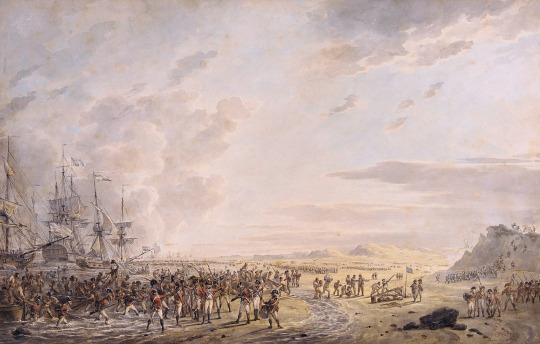
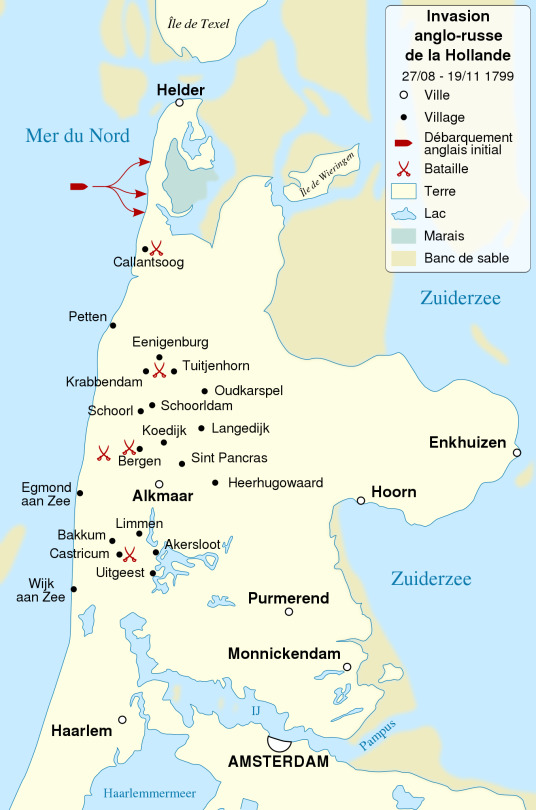
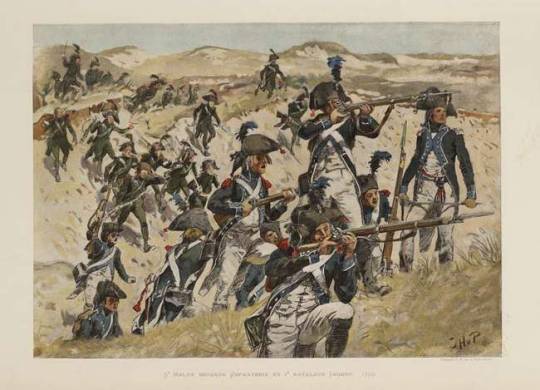
Johan Joost Reeder and the Russian-English invasion of 1799
Johan Joost Reeder is my 4th great grandfather who was born in the year 1760 in the Dutch city of Alkmaar. Unfortunately I do not know much about his life, in fact I know nothing because I am still searching for his papers. The only thing I do know about his life is that he parttook in the invasion of Noord-Holland in the year 1799, he fought alongside the French, being part of the Batavian army.Now to fully understand his story, we need to know why The English and Russians tried to invade the Netherlands in 1799 in the first place.
In 1789 the French revolution swept through France, opening the path for a whole different set of ideals and ideas. No longer was power in the hands of the monarchy or rich aristocrats but it belonged to the people. Ideas about liberty and egality started to spread and not just in France, these ideas quickly spread to the Netherlands as well, then known as the Dutch republic ruled by rich merchants and the Oranje family. Stadhouder Willem V was the current 'leader' (stadhouder) of the country but he was a weak and pathetic man, kept under the thumb of his Prussian wife and her incredibly powerful brother, the king of Prussia.
The ordinary people of the Netherlands started to be inspired by these radical thoughts coming from France and the resentment towards these few rich merchants and an outdated prince van Oranje grew which led to large revolts by the public calling themselfs patriots. The revolt was initially succesfull with patriots taking over entire cities and declaring itself free from the exclusively rich aristocratic's rule. That is until Willem V's wife called upon her brother for help who sent a Prussian army in the Netherlands to put it back under the control of the Oranjes. The Prussian army ravaged through the country, which they usually did during conflicts, around 10 percent of the entire Dutch population fled the country, many of them fleeing towards post-revolutionary France. One of them was the leader of the Patriots, Willem Daendels.
Now I don't know what happened to Johan Joost Reeder during this period but he must have been one of the voluntary Patriots as well since he was already an officer during the 1799 invasion. He must have volunteered at least a few years before the invasion took place, perhaps he joined the patriotic cause at its inception and fought alongside Daendels? Who knows..I really hope I can provide more information about him in the near future through further genealogical research.
Anyway, fast forward to the year 1794 and Daendels managed to get the support of the French army to take over the Netherlands and declare it an independent republic loyal to France and her revolutionary causes. The French invaded the Netherlands in 1794 and with the help of the patriots, who started to call themselves the Batavian army after the ancient Batavian people who used to live in the Netherlands, they swiftly took control over the country without barely any resistance at all. The best moment has got to be the frozen Dutch fleet at Texel that got conquered by the French cavalry. Normally the Dutch were able to use the dykes to their advantage but since everything was frozen during a particulary harsh winter between 94-95, these measures were useless. It was also during this campaign that my other 4th great grandfather, Frederick Lichtenegger got wounded during the siege of Willemstad, he was shot in his left leg.
The Dutch royal family fled, of course, towards England abandoning the country which might be a very good deed since it disabled him from rallying the leftover Oranje fans from rebelling against the patriots. The Dutch declared their country as the Batavian republic and a new era of enlightement started. Of course this didn't feel right to the English who were greatly concerned by all this revolutionary tumolt so close to their homeland, they were indeed afraid these dangerous ideas might blow over to England which would mean the end of the English royalty. The first coalition against France crumbled in 1797 but the English soon found a new ally, Russia.
In 1799, the second coalition war against France broke out. The British prime minister, Grenville, had set its eyes on the Batavian republic as this country could present itself to be a real danger to the UK because of her fleet and close proximity to England. Meanwhile the Prins van Oranje was in exile in the UK as well so it almost seemed natural that plans for an invasion were made. The Prince however made a huge mistake, he assumed that as soon as English and Russian boots would hit the beaches, the Dutch people would be swayed to their side and welcome back Willem V while revolting against the French. This however did not happen at all.17,593 Russian soldiers and 13,000 British soldiers took part in the invasion whose plans leaked out to the Batavians and the French. Instead of the Batavians joining the coalition, they placed 20,000 soldiers on the coasts of Holland, two of those 20,000 were my 4th great grandfather Johan Joost reeder who was an officer and his son my 3rd great grandfather Christiaan Reeder. Besides the 20,000 Dutch troops, an additional 15,000 French soldiers joined in the defence of Holland.
The British and Russian troops landed on 27 August, while the allied troops initially relied upon the local population and militia to rise up and fight alongside the allies, the exact opposite happened. The already somewhat divided Dutch republicans were now united with the single purpose of kicking out these foreign invaders, resistance towards the allies only grew stronger. The invasion went initially quite well for the allies, they managed to win the first battle of Krabbendam on 10 September and captured the city of Alkmaar while enjoying naval superiority.
The allies soon however suffered their first defeat during the battle of Bergen on 19 September. The Duke of York attempted to envelop the Franco-Batavian army by dividing his forces in four columns. The furthest right column, under command of Russian Lieutenant-General Hermann was send to the village of Bergen. Another column under the command of Lieutenant-General Dundas was send to Schoorldam. The third column, under command of Lieutenant-General Pulteney, had the objective to take Langedijk together with Oudkarspel and Heerhugowaard. The last column, under command of Lieutenant-General Abercromby, was send towards Hoorn and Purmerend.Both sides suffered heavy casualties during the battle of Bergen and unfortunately this is where my 4th great grandfather Johan Joost Reeder was killed in action in Oudkarspel, fighting off the third allied column. His son, Christiaan Reeder, was wounded as well in the leg, it must have been quite a traumatic day for the Reeder family.
The 4th allied column managed to reach and capture Hoorn without barely any resistance at all but because the other three allied columns had to retreat, the 4th column retreated back as well, leaving Hoorn once again in the hands of the Batavian republicans.With the allies now having taken large parts of Noord-Holland, the invasion still looked favourable for the allies. The Dutch however had another trick up their sleeves, one they have employed numerous times in the past, use the bountiful amount of water against the invaders. Large parts of the province were now flooded which deprived the allied forces from using farmlands and its supplies. Constant rain also prevented the allies from gaining resources from the city of Den Helder.
The allies knew they had to make a move against the Franco-Batavian army quick, before the army lost all of its moral due to a lack of food and sickness. This led to the battle of Castricum.On the morning of 6 October fighting broke out near Castricum. One allied column managed to easily drive out French outposts which gave the Russians enough confidence to attack the town itself. Castricum was however tenaciously defended throughout the day with the town changing hands several times. Eventually, with the help of a Batavian hussars charge, the allied troops broke and were forced to retreat. Meanwhile the Batavian artillery inflicted heavy losses upon the British troops. At the end of the day, the allied troops were forced to retreat back to their starting positions, losing pretty much all ground they gained.
The Dutch cities of Hoorn, Enkhuizen and Medemblik were also evacuated and quickly captured by Batavian troops who managed to prevent the burning of warehouses of naval stores by the British.The allied forces had to retreat so quickly that they left behind two field hospitals full of British wounded in Alkmaar together with 400 women and children. Four days later, on 10 October, the allies and Batavians singed an armistice which allowed the allies to retreat from the Netherlands with all their gear without having to pay for damages. By 19 November, all allied forces left. Even though the Anglo-Russian invasion failed, the Batavians suffered heavy material losses and the expedition also has contributed slightly to the fall of the directoire later this year when Napoleon Bonaparte took power in his famous coup d'etat
Images:
Landing of English troops at Calantsoog by Dirk Langendijk
5th half brigade of which my two ancestors were part of
A map showing the locations of the cities and battles
3 notes
·
View notes
Text
The story of The Conspiracy of Claudius Civilis goes beyond its mere depiction. Commissioned in 1661, the Dutch city council sought an iconic piece for the new town hall in Amsterdam. The council turned to Rembrandt, a famous master, to create a series of paintings honoring the Batavian revolt against the Romans, a historical event cherished by the Dutch as a symbol of their resistance against Spanish rule.
This specific artwork, however, illustrates the pivotal moment of the Batavian revolt. It showcases the scene where the Batavian chieftain, Claudius Civilis, leads the conspiracy against the Roman Empire. Surrounded by his fellow Batavian chiefs, Civilis swears an oath to free their people from Roman rule.
#art#culture#art history#artwork#painter#painting#artblog#wall art#home decor#dutch art#dutch culture#dutch painter#dutch artist#dutch golden age#rembrandt#rembrandt harmenszoon van rijn#The Conspiracy of Claudius Civilis
0 notes
Text
Events 8.1 (before 1900)
30 BC – Octavian (later known as Augustus) enters Alexandria, Egypt, bringing it under the control of the Roman Republic.
AD 69 – Batavian rebellion: The Batavians in Germania Inferior (Netherlands) revolt under the leadership of Gaius Julius Civilis.
527 – Justinian I becomes the sole ruler of the Byzantine Empire.
607 – Ono no Imoko is dispatched as envoy to the Sui court in China (Traditional Japanese date: July 3, 607).
902 – Taormina, the last Byzantine stronghold in Sicily, is captured by the Aghlabid army, concluding the Muslim conquest of Sicily.
1203 – Isaac II Angelos, restored Byzantine Emperor, declares his son Alexios IV Angelos co-emperor after pressure from the forces of the Fourth Crusade.
1291 – The Old Swiss Confederacy is formed with the signature of the Federal Charter.
1469 – Louis XI of France founds the chivalric order called the Order of Saint Michael in Amboise.
1498 – Christopher Columbus becomes the first European to visit what is now Venezuela.
1571 – The Ottoman conquest of Cyprus is concluded, by the surrender of Famagusta.
1620 – Speedwell leaves Delfshaven to bring pilgrims to America by way of England.
1664 – Ottoman forces are defeated in the battle of Saint Gotthard by an Austrian army led by Raimondo Montecuccoli, resulting in the Peace of Vasvár.
1714 – George, Elector of Hanover, becomes King George I of Great Britain, marking the beginning of the Georgian era of British history.
1759 – Seven Years' War: The Battle of Minden, an allied Anglo-German army victory over the French. In Britain this was one of a number of events that constituted the Annus Mirabilis of 1759 and is celebrated as Minden Day by certain British Army regiments.
1774 – British scientist Joseph Priestley discovers oxygen gas, corroborating the prior discovery of this element by German-Swedish chemist Carl Wilhelm Scheele.
1798 – French Revolutionary Wars: Battle of the Nile (Battle of Aboukir Bay): Battle begins when a British fleet engages the French Revolutionary Navy fleet in an unusual night action.
1800 – The Acts of Union 1800 are passed which merge the Kingdom of Great Britain and the Kingdom of Ireland into the United Kingdom of Great Britain and Ireland.
1801 – First Barbary War: The American schooner USS Enterprise captures the Tripolitan polacca Tripoli in a single-ship action off the coast of modern-day Libya.
1834 – Slavery is abolished in the British Empire as the Slavery Abolition Act 1833 comes into force, although it remains legal in the possessions of the East India Company until the passage of the Indian Slavery Act, 1843.
1834 – Construction begins on the Wilberforce Monument in Kingston Upon Hull.
1842 – The Lombard Street riot erupts in Philadelphia, Pennsylvania, United States.
1849 – Joven Daniel wrecks at the coast of Araucanía, Chile, leading to allegations that local Mapuche tribes murdered survivors and kidnapped Elisa Bravo.
1855 – The first ascent of Monte Rosa, the second highest summit in the Alps.
1863 – At the suggestion of Senator J. V. Snellman and the order of Emperor Alexander II, full rights were promised to the Finnish language by a language regulation in the Grand Duchy of Finland.
1876 – Colorado is admitted as the 38th U.S. state.
1893 – Henry Perky patents shredded wheat.
1894 – The Empire of Japan and Qing China declare war on each other after a week of fighting over Korea, formally inaugurating the First Sino-Japanese War.
0 notes
Text
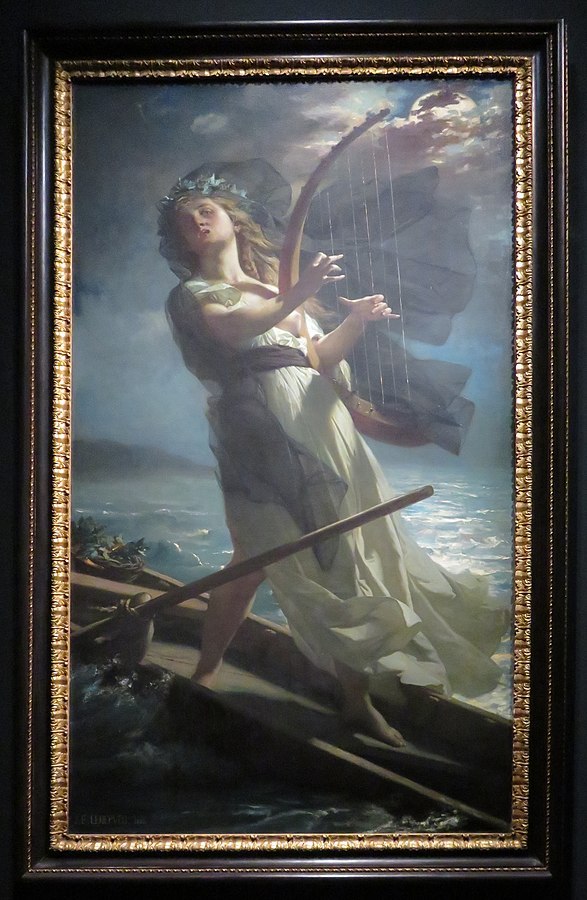
Velleda, moon effect, by Jules-Eugène Lenepveu 1883. Height: 231 cm (90.9 in); Width: 131.5 cm (51.7 in). Musée des Beaux-Arts de Quimper.
#veleda#the batavian revolt#europe#european art#pagan#paganism#germanic#classic art#paintings#19th century art#art#museums#french art#prophet#jules eugene lenepveu
295 notes
·
View notes
Note
Tell us about Horatius and Boscus, please!
Horatius and Boscus are Hornblower and Bush from my Roman gladiator AU, set around 79 CE. Boscus, born Wiljahelmaz, comes from a Germanian tribe, the Bosci, near modern day Nijmegen in the Netherlands, and along with his tribe participated in the Batavian Revolt of 69 CE, where he was captured and taken to Italy to serve as a gladiator. Horatius, born Servius Horatius Cornicen, is the son of a freedman, and served as a centurion in the Roman Navy despite his lowly birth and young age, owing to a well-placed patron (and the authorial thumb on the scales). What might have been a decent career came to an end, however, when he murdered his superior officer and sentenced to death (before anyone points out similarities between this and the pirate AU, I know, I know, blame Forester.) Thanks to the intervention of his patron, however, he is given a chance to die with a sword in his hand in the arena, and due to skill and blind luck manages to defeat enough opponents that he's deemed worthy of becoming a gladiator (and because a disgraced naval officer will likely get bums in seats, and gladiator fights were very much about profit.) There, he meets Boscus, and our story begins...
It's an AU very much written with one person (me) in mind, and contains bad Latin, worse attempts at ancient Hebrew, and frankly atrocious reconstructions of Proto-Germanic. The only thing I can say positively about it is that I know a reasonable amount about Roman architecture, meaning that words for rooms are used with utter disregard for whether or not the reader knows what a tepidarium is.
#I could go on but this is an intro#the one thing I love is how Bush's name is straight from Proto-Germanic#like you don't have to change anything#why does Horatius go by his nomen? damn if I know#other than the fact that it's more recognisable than Cornicen even if Cornicen is a direct translation of Hornblower#hornblower#the gladiator au
12 notes
·
View notes
Photo

Legio I Germanica
Legio I Germanica was a Roman legion that won acclaim early under Augustus (27 BCE - 14 CE) but was stripped of its title for cowardice. Stationed on the Lower Rhine, the legion mutinied in 14 CE and then faced disgrace when it turned traitor to Rome during the Batavian Revolt. It was disbanded by Vespasian in 70 CE.
Continue reading...
47 notes
·
View notes
Photo
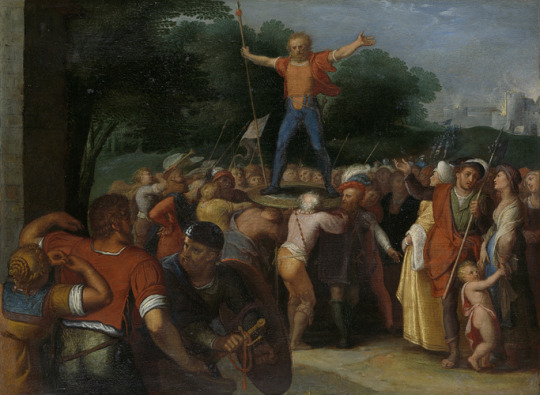
Brinno Raised upon the Shield, Museum of the Netherlands
In 1613, the Dutch parliament (States General) commissioned Otto van Veen to paint twelve paintings depicting the revolt of the Batavians against the Romans in AD 69 and 70. These were displayed in Binnenhof, the central government building in The Hague. In the early years of the Dutch Republic, many compared their own revolt against Spain to the Batavian uprising.
http://hdl.handle.net/10934/RM0001.COLLECT.6798
6 notes
·
View notes
Photo

Pieter Hardimé - Magnificent still life and a vase of flowers and a parrot in a niche -
oil on canvas, Height: 135 cm (53.1 in); Width: 72 cm (28.3 in)
Pieter Hardimé (25 November 1677, Antwerp - September 1748, The Hague) was a Flemish painter known for his paintings of flowers. He trained in Antwerp and later moved to the Dutch Republic where he worked in The Hague. He was active as a decorative painter of flowers for wall and ceiling decorations, often in collaboration with Mattheus Terwesten.
The United Provinces of the Netherlands, or United Provinces (officially the Republic of the Seven United Netherlands), commonly referred to in historiography as the Dutch Republic, was a federal republic which existed from 1588 (during the Dutch Revolt) to 1795 (the Batavian Revolution). It was a predecessor state of the Netherlands and the first fully independent Dutch nation state.
The republic was established after several Dutch provinces revolted against rule by Spain, as the Spanish Netherlands. The provinces formed a mutual alliance against Spain in 1579 (the Union of Utrecht) and declared their independence in 1581 (the Act of Abjuration).
Although the state was small and contained only around 1.5 million inhabitants, it controlled a worldwide network of seafaring trade routes. Through its trading companies, the Dutch East India Company (VOC) and the Dutch West India Company (GWC), it established a Dutch colonial empire. The income from this trade allowed the Dutch Republic to compete militarily against much larger countries. It amassed a huge fleet of 2,000 ships, larger than the fleets of England and France combined. Major conflicts were fought in the Eighty Years' War against Spain (from the foundation of the Dutch Republic until 1648), the Dutch–Portuguese War (1602–1663), four Anglo-Dutch Wars against the Kingdom of England (1652–1654, 1665–1667, 1672–1674 and 1780–1784), the Franco-Dutch War (1672–1678), and War of the Grand Alliance (1688–1697) against the Kingdom of France.
The republic was more tolerant of different religions and ideas than its contemporary states were, allowing freedom of thought to its residents. Artists flourished under this regime, including painters such as Rembrandt, Johannes Vermeer and many others. So did scientists, such as Hugo Grotius, Christiaan Huygens and Antonie van Leeuwenhoek. Because Dutch trade, science, military, and art were among the most acclaimed in the world during much of the 17th century, this period became known in Dutch history as the Dutch Golden Age.
The republic was a confederation of provinces each with a high degree of independence from the federal assembly, known as the States General. In the Treaty of Westphalia (1648) the republic gained approximately 20% more territory, located outside the member provinces, which was ruled directly by the States General as Generality Lands. Each province was led by an official known as the stadtholder (Dutch for 'steward'); this office was nominally open to anyone, but most provinces appointed a member of the House of Orange. The position gradually became hereditary, with the Prince of Orange simultaneously holding most or all of the stadtholderships, making them effectively the head of state. This created tension between political factions: the Orangists favoured a powerful stadtholder, while the Republicans favoured a strong States General. The Republicans forced two Stadtholderless Periods, 1650–1672 and 1702–1747, with the latter causing national instability and the end of Great Power status.
Economic decline led to a period of political instability known as the Patriottentijd (1780-87). This unrest was temporarily suppressed by a Prussian invasion in support of the stadtholder. The French Revolution and subsequent War of the First Coalition caused these tensions to reignite. Following military defeat by France, the stadtholder was expelled in the Batavian Revolution of 1795. This ended the Dutch Republic; it was succeeded by the Batavian Republic.
15 notes
·
View notes
Text
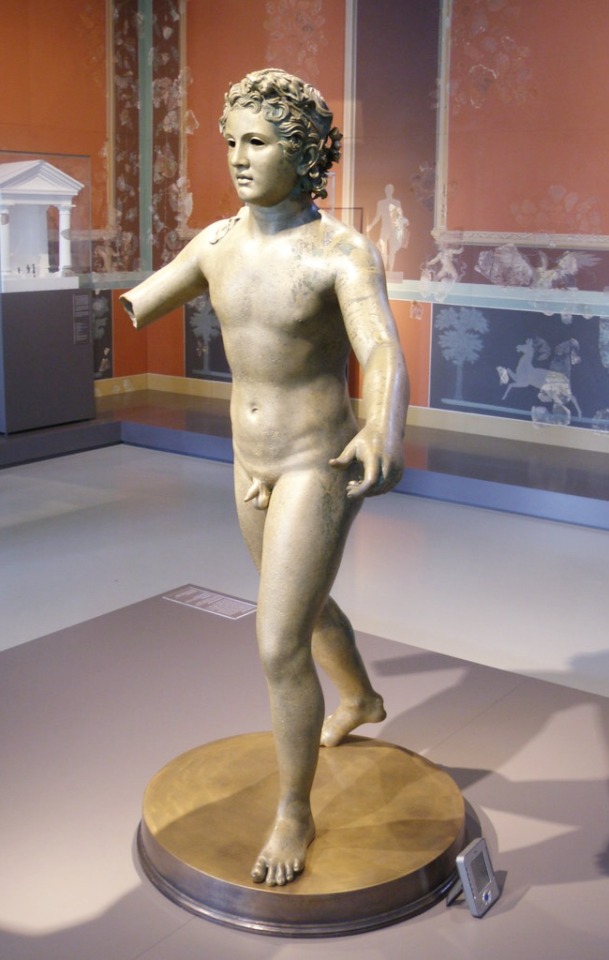


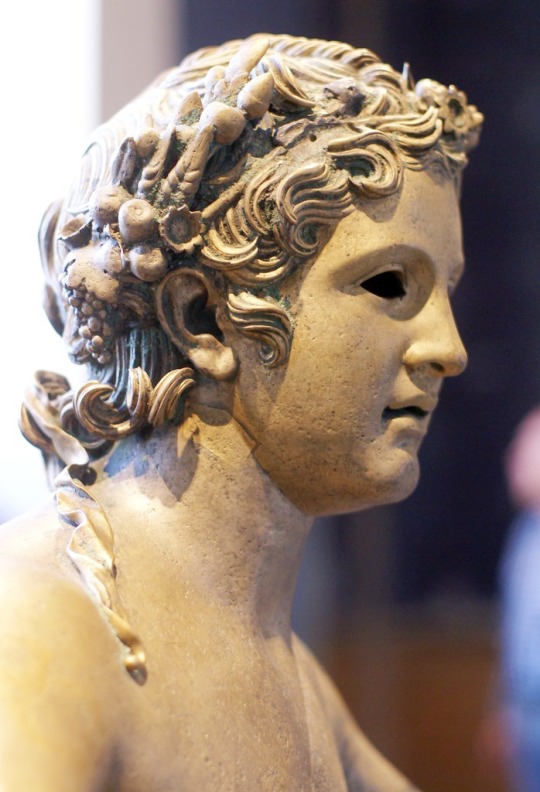
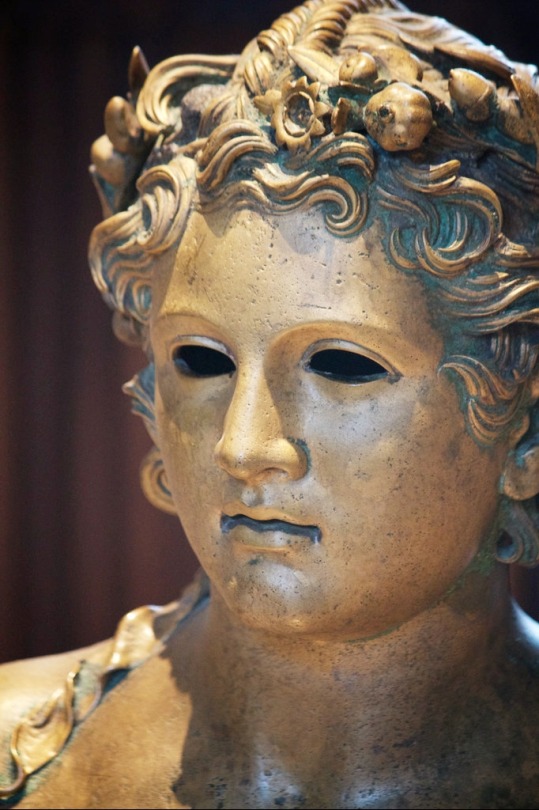

Xanten Youth
Bronze statue of the Xanten Youth, 1st century AD.
It was discovered in 1858 by fishermen in the Rhine at Luttigen not far from Xanten. Only the right forearm is missing.
The Naked Youth whose hair is adorned with a wreath composed of acorns, ears of wheat, grapes, poppies, pines-cones and a pomegranate, originally held a tray (ferculum) in both hands. This identifies him as a so-called "dumb waiter" of the kind that was used at Roman banquets. Food and drink in expensive silver vessels would have been served to guests on the tray.
The Youth was made around the middle of the 1st century AD and may have come from the legionary fortress of Vetera I, which was pillaged during the Batavian revolt in AD 70.
(Neues Museum, Berlin.)
246 notes
·
View notes
Photo
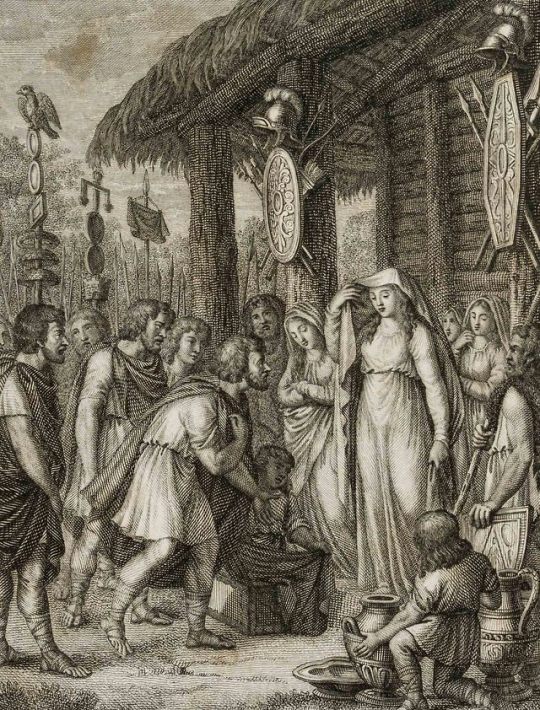
Veleda
Veleda is a name of a seeress who lived in the first century AD. Her name also seems to be a title for those who can see into the future. These women might have practiced something similar to seidr or witchcraft.
The woman Veleda belonged to the Bructeri tribe. She was viewed as an important person amongst the Germanic people. She lived in a tower and was also asked upon to settle disputes. An example of this is the dispute between the Roman citizens of the Colonia Claudia Ara Agrippinensium and the Germanic tribe Tencteri. She managed to solve the dispute without violent conflicts.
Her most famous act was a prophecy that she made. in this prophecy she foretold how the Batavians would be succesful in a rebellion. In 69AD, this rebellion did indeed break out. It is however completely unclear if this prophecy was made before, during or after the revolt and if she was specifically talking about the Batavi.
In 77AD she was either captured or granted asylum by the Romans. Statius, a Roman poet, has described this and also mentioned that Rutilius Gallicus was her captor. A Greek epigram has also been found near Rome. An epigram is a short poem often used for inscriptions on monuments, altars or grave stones. This epigram criticized the powers of Veleda.
Nothing further is known about her. We do not know when she died. We do know because of her that wise women who were gifted with powers to see into the future were almost worshiped as Goddessess amongst the Germanic people. She held great authority in her tribe. There might have been more of such women. Tacitus described how many women were viewed as prophetic but we do not know how many were as important as Veleda was.
This is the description written by tacitus:
"Veleda was an unmarried woman who enjoyed wide influence over the tribe of the Bructeri. The Germans traditionally regard many of the female sex as prophetic, and indeed, by an excess of superstition, as divine. This was a case in point. Veleda's prestige stood high, for she had foretold the German successes and the extermination of the legions."
A question that (at least I have) about her is, were her powers somehow connected to other forms of witchcraft known in the Germanic culture?
The Völuspá is written from the perspective of a seeress who was able to see the past and the future just like a Veleda could. The seeress in the poem was a Völva, a seidr practitioner. Are Völvas and Veledas the same? Maybe the Veledas are older than the Völvas. Did both their practices originate from the same source?
These questions can probably never be answered with trustworthy sources like written evidence and archeological finds.
Artist illustration: Hermann Hirsch Pinhas, 1823
157 notes
·
View notes
Photo

“Koningsdag” translates to “King’s Day,” and marks the birthday of the current King of the Netherlands, Willem-Alexander. The celebration has its roots in the 1880s, when the government began celebrating the monarch’s birthday as a way of promoting national unity. (Amusingly, the first holiday was actually the Prinsessedag on August 31st, 1885; no one liked William III enough to celebrate his birthday.)
Many attributes of the arms of the Netherlands are directly derived from those of the House of Nassau, since William I, the first king of the Kingdom of the Netherlands, was of that house. The lion rampant, the field billette, and the tinctures are all directly derived from Nassau. The crown is an interesting case. The House of Nassau split into two branches in 1255 between the elder brother, Walram II and Otto I. At the time, Walram added a crown to the lion in his arms as a form of differencing. However, William I was not descended from the senior Walram line, but the junior Ottonian. The crown in the Dutch arms, like the sword and arrows, is borrowed from the former arms of the Dutch Republic.
The arms of the Dutch Republic (or a lion crowned gules armed and langued, holding in the dexter paw a sword and in the sinister seven arrows azure) came into use in 1584. The tinctures were swapped around near 1665 to be gules a lion crowned or armed and langued, holding in the dexter paw a sword and in the sinister seven arrows argent. The tinctures were from Holland, the most important of the provinces. The sword represented defense of liberty, the crown their newly-won sovereignty, and there was supposed to be one arrow per included province. This changed quite a bit, depending on how many provinces were members at any given time; although it eventually settled on 7 in 1606, the seal wasn’t officially updated until 1795. A shame they took so long, because the other thing that happened in 1795 was the Batavian Revolution, which established the Batavian Republic.
The only reason I can honestly say that the Batavian Revolution didn’t completely butcher the Dutch arms is because… the Batavian Republic didn’t actually use arms. They had an allegorical image of a “maiden of freedom,” which was apparently a resurrection of some of the nationalist symbology of the 16th-century Dutch Revolt. It did involve a lion, since that was now a well-established regional symbol, and a lot of Roman imagery, and a pole with a “cap of liberty.” It was mercifully short-lived. In a rare case of the Napoleons making sensible and visually attractive heraldic decisions, when the Kingdom of Holland formed in 1806, they quartered the Dutch Republican lion with the Napoleonic eagle, but that only lasted through 1810, when the kingdom was abolished. In 1813, the French (finally) got kicked out, and William - then the sixth Prince of Orange of that name - was proclaimed William I, Sovereign Prince of the Netherlands. He quartered the Dutch Republican lion with his personal arms, with Nassau (sans crown) in an escutcheon of pretense.
The Dutch arms took on their present form in 1815. Since the new United Kingdom of the Netherlands included territory that hadn’t been a part of the Dutch Republic, the former red-and-gold lion was no longer appropriate. Instead, William took the crown, sword, and arrows and added them to the lion of Nassau, resulting in the same arms the country uses today.
7 notes
·
View notes
Text
Rome, Byzantium and NATO. Grand Strategy of the West and Georgia (Colchis/Lazica and Iberia)
Tedo Dundua, Emil Avdaliani
Introduction
There are two ways to prove Georgia’s place within the NATO Alliance. First is the current argument urging for total Euro-Atlantic unity, next – historical one. Previous pan-European (Roman and Early Byzantine) military presence in Georgia can be applied to the present discussion. The article covers this issue.
Roman Period. Frankish Limitanei in Lazica
Before being totally destroyed, Roman Imperial security system actually had shown three gradual phases of development.
Large number of the Italian colonists with the best technologies, swift and comfortable communications, the most prominent industrial output, Roman citizenship, municipal freedom – that was the Roman gift for the Western provinces in the 1st-2nd cc. A.D. Sincere intimacy with the metropolis had been founded as a direct result of complete satisfaction. It paved the way to the Romanization. As for the Greeks, the Romans reserved a quiet life and economic stability. Still beyond the Roman Rhine, Danube and Pontus there were others favouring this concept of pan-European integration. The happy client kings used to be awarded with the Roman citizenship. And for the Julio-Claudians these client kingdoms formed the first defense-line of the Imperial territories. A little behind, the whole perimeter was dotted by solid legionary concentrations, proving the system to be impregnable. No cardinal changes took place in the era of the Antonines, except for annexation of the client kingdoms and breaking the big army concentrations in favour of scattering the legions along the whole frontier. In both cases, after defeating comparatively weak enemy at the border, the Romans usually attacked their territory. This system of security is called forward defense.
Greeks and the Romans were sending more and more working hands towards industry, but not to manufacture the means of production. As a result, population was growing, but not amount of industrial goods per capita. Prices rushed high for the Italian produce, demanding damping for provincial food and raw materials, thus weakening the sympathies between the European subjects of the Roman Empire. Some even started to search for a relief beyond the Rhine and Danube rivers. Many things happened that completely changed the defensive strategy, namely: 1. economic crisis; 2. weakening of the integratory links; 3. socio-economic animation of “Barbaricum”; 4. financial chaos and some professional regiments converted into limitanei. From now on they are to stand the first strike and evacuate the whole frontier folk into citadels, thus wearing down the enemy. And there were large and mobile field armies deployed far behind those self-contained strongholds to cut down any invasion into the depth. This system shaped in the times of Diocletian is called defense-in-depth.
But before this new system was finally established, the Romans had been fighting those already easily passing the border wherever they could manage to concentrate large army-units. In the early days of the Empire praetorians formed the only Imperial reserve. And now Gallienus recruited special mobile reserve-regiments. Name for this defensive system is elastic defense.
Security system had to be changed at least because of emergence of the Germanic seaborne attacks from the 3rd c. everywhere at the seas that prolonged the line of the frontier (Ed. N. Luttwak. The Grand Strategy of the Roman Empire. From the First Century A.D. to the Third. Baltimore. 1981, pp. 192-193; T. Dundua, N. Silagadze. European Industrial Complexes of I Cycle of Capitalism and the Georgian Western Affiliations. Historical and Numismatic Tale. Tbilisi. 2005, pp. 5-7; T. Dundua. North and South. Tbilisi. 2001, pp. 8-15).
Full-time units, legions, alae of cavalry, cohortes of infantry and mixed cohortes equitatae served the forward defense-system. Part-time border force of limitanei had appeared and auxiliary alae and cohorts had disappeared; and regular mobile reserve – comitatenses – substituted legions, fixed at the border. All they served new security system – defense-in-depth. The whole 3rd c. saw these changes, finally shaped in the times of Constantine I. Septimius Severus was the first to form a certain kind of reserve. He stationed II Parthica in Albanum, increased praetorian and urban cohorts in number. And Gallienus created special cavalry units to serve as a reserve (Ed. N. Luttwak. The Grand Strategy, pp. 173, 184).
In the 3rd c. large federations of Franki and Alemanni began to threaten the Rhine-frontier. And the Goths had already reached Dniester by 238 (Ed. N. Luttwak. The Grand Strategy, pp. 128, 146). Franks attacked Gaul, Alemanns – Italy. From the great deeds of Emperor M. Aurelius Probus (276-282) the most important is the deliverance of seventy Gaulic cities. He drove back Franks and Alemanns, four hundred thousand of them being killed. Probus passed the Rhine, and returned back with considerable tribute of corn, cattle, and horses. Sixteen thousand Germanic recruits were dispersed among the Roman units. Other captive or fugitive barbarians gained a new status, that of part-time peasant-soldiers (limitanei). Emperor transported a considerable body of Vandals into Cambridgeshire, great number of Franks and Gepidae were settled on the banks of the Danube and the Rhine, Bastarnae – in Thrace. Pontic (The Black Sea) coast was reserved for some more Franks (Ed. Gibbon. The Decline and Fall of the Roman Empire. Vol. 1. London. 1993 (first published in 1776), pp. 362-368). But which one exactly? This is to be discussed.
According to Ed. Gibbon, Franks settled at the sea-coast of Pontus had to check the Alani inroads. A fleet stationed in one of the harbors of the Euxine fell into their hands, and they resolved, through unknown seas, to explore their way from the mouth of Phasis (river Rioni in West Georgia) to that of the Rhine. They easily escaped through the Bosphorus and the Hellespont, and cruising along the Mediterranean, indulged their appetite for revenge and plunder by frequent descents on the shores of Asia, Greece and Africa. City of Syracuse was sacked by the barbarians. Franks proceeded to the columns of Hercules, coasted round Spain and Gaul, and steering their course through the British channel, at length finished their voyage by landing in safety on the Batavian or Frisian shores (Ed. Gibbon. The Decline and Fall . . ., pp. 367-368).
What is this whole story based on? Zosimus and one panegyric to Constantius Chlorus contributed to it.
Narrating about the events in the past, in the times of divine Probus, author of this panegyric mentions undeserved success of the small Frankish band, who, sailing from Pontus on the captured fleet, ravished Greece and Asia, damaged Africa, stormed Syracuse, and passing through the columns of the Hercules, reached the ocean (Recursabat quippe in animos illa sub diuo Probo paucorum ex Francis captiuorum incredibilis audacia et indigna felicitas, qui a Ponto usque correptis nauibus Graeciam Asiamque populati nec impune plerisque Libyae litoribus appulsi ipsas postremo naualibus quondam uictoriis nobiles ceperant Syracusas et immenso itinere peruecti oceanum, qua terras irrumpit, intrauerant atque ita euentu temeritatis ostenderant nihil esse clausum piraticae desperationi, quo nauigiis pateret accessus.) (Panegyricus Constantio Dictus, IV, XVIII. Panégyriques Latins. T. I (I-V). Texte Établi et Traduit par Édourd Galletier. Paris. 1949, pp. 96-97).
Zosimus tells us about the Franks having appealed to the Emperor, and having a country given to them. A part of them afterwards revolted, and having collected a great number of ships, disturbed all Greece; from whence they proceeded into Sicily, to Syracuse, which they attacked, and killed many people there. At length they arrived in Africa, whence though they were repulsed by a body of men from Carthage, yet they returned home without any great loss (Zosimus. New History. Book 1. London. 1814).
There is no mention of mouth of the river of Phasis as a spring-board for the expedition in the sources. Then, what was in Gibbon’s mind? Perhaps, logic, excluding the possibilities.
Indeed, the Northern Black Sea coast is beyond the Roman rule. The Western shores, and the Balkans are already packed with the barbarians. Southern littoral was less used for receptio, while Lazica (West Georgia) and Pontic Limes cannot be argued. And something strange had happened to this limes in the 3rd c. Now threat comes not from the front, the Romans have Lazi client king dwelling there, but – from behind, because of the Goths living at the Northern shores.
We can only guess that the Franks were in Lazica as limitanei. But we really know nothing about how they were coordinating with the full-time units, their number before and after the revolt, what was the life like for those who stayed loyal.
Still, it seems quite reasonable that the bargain of receptio-system should have been distributed among all Roman provinces to keep the centre undisturbed from the barbaric influx. In the 3rd c. the Empire is able to do this, not after.
Byzantines in Georgia
With the death of Theodosius, last Emperor of the united Roman world, in 395 A.D. the Empire was divided into two almost same-sized halves. The Western part, while defending itself throughout the 5th c. from various barbarian hordes (at the time, the Western part was defended by regiments consisting mainly of barbarians) coming from beyond the Rhine river, had an almost destroyed tax-paying system. This very factor did not allow the Imperial administration based in Ravenna to muster enough economic and military resources for effective defense of the Northern borders. Last Western Roman Emperors were mere puppets in the hands of barbarian warlords – the process which culminated in deposing the last Emperor Romulus Augustulus in 476.
The Eastern part (Byzantium) with the capital in Constantinople, on the other hand, showed greater resilience in managing internal problems and external threats. Byzantium managed simultaneously to hold off the barbarians coming from the North and the Sassanians from the East. This was made possible by an efficient tax-paying system the Byzantines inherited from the Romans, which, in turn, made it possible to field large armies to defend the Imperial borders on several fronts and at the same time wage offensive wars (Ed. N. Luttwak. The Grand Strategy of the Byzantine Empire. Harvard. 2009, pp. 1-16. The most apparent case is the reign of Justinian when, while waging war on Vandals in North Africa and the Ostrogoths in Italy, Constantinople still had to defend its Eastern border from the Sassanians and the Danube river from the Slavs).
The Byzantines did not have such abundant resources as the Romans had during the first three centuries A.D. Moreover, the Eastern half was spread on three continents – Europe, Asia and Africa – making the Imperial borders highly vulnerable to foreign powers. In other words, the geography put the Byzantine Empire at a huge disadvantage as the Danube river was a barrier easy to cross for the Goths, or in later centuries Huns, Slavs and Avars. In Africa, the desert frontier stretching for more than a thousand kilometers had no geographic barrier to rely on making rich Tripolitania and Byzacena and the South of Egypt exposed to attacks from the Berbers and other nomadic groups. The Eastern frontier too was highly vulnerable as the Arab groupings could easily reach Palestine and Syrian cities from the Syro-Mesopotamian desert. In the North Mesopotamia Byzantium faced its greatest rival, Sassanian Iran, and this portion too needed to be defended with the assemblage of large military power, whether through the field armies or military fortifications. Moreover, the Byzantines had little geographic depth along its entire Eastern frontier to fully employ the defense-in-depth strategy (e.g., in the Balkans Constantinople did enjoy large geographic depth necessary for the defense. This was apparent when the Huns under Attila and then the Avars in early 7th c. broke through the Danubian defenses and reached Constantinople. However, military regiments placed in various fortresses and the distance of several hundreds of kilometers (from the Danube to the capital) enabled the Emperor, whether it was Theodosius II or Heraclius, to thwart the barbarian onslaughts). The similar situation was in Africa. Since Asia Minor, Balkans, Egypt and Syria were the most prosperous lands in terms of population number and the level of urbanization, the functioning of the Empire was contingent upon the defense of these provinces. Overall, the Byzantines were at much worse geographic situation than their Western counterparts.
Thus, in order to survive in this difficult geopolitical situation and preserve the Empire from early 5th c. to the 7th c., the Byzantines had to develop a whole set of military strategies. In other words, the Byzantines were no less successful than the Flavians, Antonines and late 3rd c. Emperors. However, the Byzantines made numerous changes by adapting to new circumstances. Since Constantinople had less economic and human resources than the united Roman Empire, the Byzantines always tried to use less military power and employ more diplomacy and the propagation of the Christian religion (G. Fowden. Consequences of the Monotheism in Late Antiquity. Princeton. 1993, pp. 80-100) to safeguard Imperial borders.
The Byzantines inherited from the Romans military presence in Lazica and alliance with Kartli/Iberia (East and South Georgia). This military tradition goes back to the first two centuries A.D. and represents a forward-defense strategy. Byzantine garrisons, which existed in Lazica from the 5th c. till the Arab invasion of the Middle East in the 30s of the 7th c. (T. Dundua. Influx of Roman Coins in Georgia. Roman Coins Outside the Empire. Ways and Phases, Contexts and Functions. Proceedings of ESF/SCH Exploratory Workshop. Nieborow (Poland). 2005. Moneta. Wetteren. 2008, p. 313), did not change their location. However, the role of Lazica considerably increased as in late 4th c. the so-called “Völkerwanderung” or Migration period began. Since the new peoples such as Huns, Avars etc. lived in the Eurasian steppes, which bordered the Caucasian range and the Danube river, Constantinople had to face a two-front war from the North (from the Eastern and Western parts of the Black Sea). Therefore, the Byzantine garrisons in Lazica were transformed into forward posts for collecting information about new peoples coming from the steppes and, in case of need, establishing first diplomatic contacts too.
For example, when approximately in 557 the Avars reached the Volga river, in modern-day Southern Russia, in a year or two through the Alans they sent an embassy to Constantinople. But, before the letter was received in the capital, first it had been passed through the hands of Byzantine generals stationed in Lazica (Ed. N. Luttwak. The Grand Strategy of the Byzantine Empire, p. 59). The role of Lazica increased also because of the mountain passes through which the newly-coming nomads from the North could potentially penetrate into the South and cause havoc even in the Eastern provinces of the Byzantine Empire as it happened in 395 when the Huns reached as far as Antioch (P. Heather. The Fall of the Roman Empire. A New History of Rome and the Barbarians. Oxford. 2007, pp. 145-154). The Byzantine officials also used the passes to distract nomad leaders by making them to take much longer roads to reach the Imperial capital. Menander Protector preserves the bitter complaint of a Turkic chief from the steppes, North to the Caucasian range, dated by 577: “As for you Romans, why do you take my envoys through the Caucasus to Byzantium, alleging that there is no other route for them to travel? You do this so that I might be deterred from attacking the Roman Empire by the difficult terrain (i.e. high mountains which for horses are very hard to cross). But I know very well where the river Danapris (Dniepr) flows, and the Istros (Danube) and the Hebrus (Maritsa, Meric)” (Excerpta de Legationibus Romanorum ad Gentes, 14, in The History of Menander the Guardsman. Translated by R. C. Blockley. London. 1985, p. 175).
Lazica’s military importance increased even more following the stand-off between Justinian and the Sassanian Shahanshah Khusro I Anushirvan in mid-6th c. By the time Iran had already been increasing its political and military pressure towards North and West, which culminated in the abolition of the Albanian and Armenian kingdoms during the 5th-early-6th cc. As was said, mid-6th c. saw renewed warfare between the empires and the focus of the conflict, traditionally along with the North Mesopotamia, also fell on Lazica. Iran was interested in occupying the Eastern Black Sea coast to pressure Constantinople (which by the time was already embroiled in a war with the Ostrogoths in Italy) into signing a more winning peace treaty for Ctesiphon. The Byzantines knew well that if the Sassanians managed to occupy the Lazica shore, Iranian military vessels in the near future would make their way through the Bosphorus directly to Constantinople. This is well reflected in one of the passages from Procopius – Lazi sent an embassy to Khusro to explain the geopolitical advantages which the Iranians would gain through controlling Lazica and the Byzantine fortresses there: “To the realm of Persia you will add a most ancient kingdom, and as a result of this you will have the power of your sway extended, and it will come about that you will have a part in the sea of the Romans through our land, and after thou hast built ships in this sea (i.e. Black Sea), O King, it be possible for thee with no trouble to set foot in the palace in Byzantium. For there is no obstacle between. And one might add that the plundering of the land of the Romans every year by the barbarians along the boundary will be under your control. For surely you also are acquainted with the fact that up till now the land of the Lazi has been a bulwark against the Caucasus Mountains” (De Bello Persico. II. 15; Procopius of Caesarea. History of the Wars. Translated by H. B. Dewing. Cambridge. Massachusetts. 1914, pp. 225-226).
The above analysis of the Roman and Early Byzantine military strategies towards their neighbors quite clearly shows that Georgia always had its own place within the pan-European military alliances. Why not bring it back?
NATO and Georgia
NATO alliance’s strategy could be likened to the best military traditions of Rome and Byzantium discussed above. As was the case with these two Empires, NATO too regards the Black Sea and its Eastern shore – Georgia – as fundamental for the alliance’s strategy in the Eastern Europe and the Black Sea region overall.
As for the Romans and Byzantines before, for NATO too Georgia’s Black Sea shore would allow the alliance to expand militarily in the region and control crucial land and maritime military routes from the North to the Black Sea basin. There is also an economic dimension since Georgia serves as a vital transit route for oil/gas pipelines, important railroads connecting the Caspian and Black Seas. Indeed, as Roman and Byzantine army units before, NATO’s presence in Georgia would serve as a defensive shield for trade in the region which in Antiquity was often referred to as a part of the famous Silk Road and nowadays is called as the South Caucasus energy and transport corridor because of oil/gas transport infrastructure.
This strategic vision is well reflected in one of the recent NATO-Georgia Commission statement: “Georgia is one of the Alliance’s closest operational partners, and an Enhanced Opportunities Partner. Allies highly appreciate Georgia’s steadfast support for NATO’s operations and missions…” (NATO-Georgia Commission Statement. Oct. 2019.
https://www.nato.int/cps/en/natohq/official_texts_169323.htm?selectedLocale=en).
Direct allusion to the alliance’s Black Sea strategy is also seen in another passage from the same Commission statement: “NATO values Georgia’s engagement in, and contributions to, strategic discussion and mutual awareness, on security in the Black Sea region” (NATO-Georgia Commission Statement. Oct. 2019. https://www.nato.int/cps/en/natohq/official_texts_169323.htm?selectedLocale=en).
Thus NATO alliance’s strategic vision for Georgia and the wider Black Sea region is similar to how the Romans and Byzantines saw this part of the world.
0 notes
Text
WILLEM I
1st King of the Netherlands
(born 1772 - died 1843)
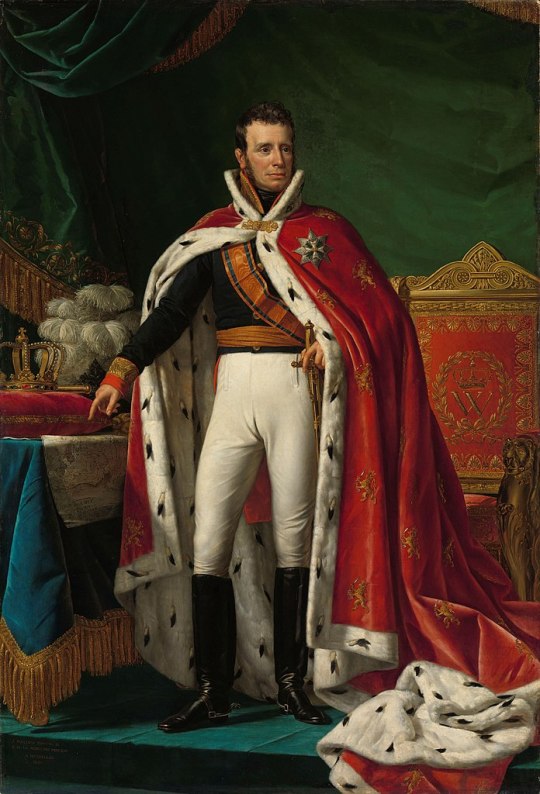
pictured above is a portrait of the King of the Netherlands, by Joseph Paelinck from 1819
-------------------- ~ -------------------- ~ --------------------
SERIES - On this day August Edition: Willem was born on 24 August 1772.
-------------------- ~ -------------------- ~ --------------------
WILLEM FREDERIK was born on 24 August 1772, at the Huis ten Bosch Palace, at The Hague in the Dutch Republic. He was one of the sons of Willem V, Prince of Orange-Nassau and Princess Wilhelmine of Prussia, and thus a member of the HOUSE OF ORANGE-NASSAU.
As the eldest surviving son he was his father's heir, known as the HEREDITARY PRINCE OF ORANGE-NASSAU from birth. He was also the heir of his family's hereditary position of Stadtholder of the United Provinces of the Netherlands.
He married his first cousin FRIEDERIKE LUISE WILHELMINE in 1791. She was a Princess of Prussia as one of the daughters of Friedrich Wilhelm II, King of Prussia and his second wife Princess Friederike Luise of Hesse-Darmstadt. Together they had six children (check the list below).
Following many years of revolts in the Netherlands and the uprising of the French Revolution in Europe, the Dutch Republic was abolished in 1795 and the French created the Batavian Republic.
His father then decided to flee from the Netherlands to exile. The Orange-Nassaus went first to Great Britain and later his wife moved to Prussia, where most of their children were born. And he eventually return to the Netherlands to fight the French.
By 1802 the French Republic and Prussia tried to compensate the Orange-Nassaus because of their lost territories in the Netherlands. They created the Principality of Orange-Nassau-Fulda which his father did not accept at first, but later welcomed the offer in Prince Willem Frederik's name. So he became the new PRINCE OF ORANGE-NASSAU-FULDA.
In April 1806 his father died and he succeeded as WILLEM VI, PRINCE OF ORANGE-NASSAU in the Holy Roman Empire, uniting his older and new territories. However by July he lost everything, because the Empire was abolished and Napoléon I, Emperor of the French created the Confederation of the Rhine.
Though by 1813 the French Empire was defeated at the Battle of Leipzig and the Confederation of the Rhine was dissolved and he was able to recover some of his former Nassau territories. So he was also able to revive the Principality of Orange-Nassau.
That same year the territories of the former Dutch Republic were freed from France and the provisional government of the Netherlands agreed that the Orange-Nassaus, former Statdholders, were the best choice as rulers.
At the end of the year the provisional government invited him to return and offered him to be their King, but he only accepted to rule as SOVEREIGN PRINCE OF THE UNITED NETHERLANDS and approved a Constitution.
Emperor Napoléon I was defeated and exiled to the island of Elba for the first time in 1814. So European leaders sought to reinstate the order and for over a year they had many talks that became known as the Congress of Vienna. In these meetings his rule over the Principality of Orange-Nassau was ratified.
However after Napoleón escaped from his exile in 1815, the Prince agreed with his cousin and brother-in-law Friedrich Wilhelm III, King of Prussia on the exchange of the Principality of Orange-Nassau for his creation as GRAND DUKE OF LUXEMBOURG, as the latter was closer to the Netherlands and he wished to avoid any further invasions.
The Congress of Vienna, on its finals acts in 1815, approved for the Netherlands to be united to the Southern Netherlands and proclaimed the United Kingdom of the Netherlands, of which he became the first Monarch as WILLEM I, KING OF THE NETHERLANDS.
After Napoléon was exiled again and died at the island of Saint Helena, the Netherlands enjoyed fifteen years of prosperity and peace.
This peace was only disturbed whem the Southern Netherlands rebelled and created the independent Kingdom of Belgium in 1830. The new Kingdom invited Prince Leopold of Saxe-Coburg and Gotha to be their new Monarch, and he became Leopold I, the first King of the Belgians. But Europe would only recognize Belgian independence by the Treaty of London of 1839, in which the King of the Netherlands also was recognized as DUKE OF LIMBURG.
A year later in 1840 he abdicated in favor of his son, who became Willem II, the new King of the Netherlands.
So after the abdication the former King of the Netherlands assumed the title of COUNT OF NASSAU.
And at early 1841 he married again to the Catholic HENRICA ADRIANA LUDOVICA FLORA, a Countess of Oultremont of Wégimont. She was one of the daughters of Count Ferdinand of Oultremont of Wégimont and Johanna Susanna Hartsinck. They did not have any children.
Aged 71, the Count of Nassau died in Berlin in 1843.
-------------------- ~ -------------------- ~ --------------------
WILLEM I and his wife WILHELMINA had six children...
Willem II, King of the Netherlands - husband of Grand Duchess Anna Pavlovna of Russia;
a stillborn son;
Prince Frederik of the Netherlands - husband of Princess Luise of Prussia;
Princess Paulina of Orange-Nassau - died aged six;
another stillborn son; and
Princess Marianne of the Netherlands - wife first of Prince Albrecht of Prussia and second of Johannes of Rossum.
-------------------- ~ -------------------- ~ --------------------
Check my post on the History of the original Principality of Orange!
It was not of Dutch origin and was created in 1163.
#willem i#king willem i#king of the netherlands#kingdom of the netherlands#orange nassau#house of orange nassau#house of orange#dutch royalty#dutch royal family#royals#royalty#monarchies#monarchy#royal history#dutch history#european history#world history#history#history lover#18th century#19th century#napoleonic wars#napoleonic era#napoleon#congress of vienna#history with laura
1 note
·
View note